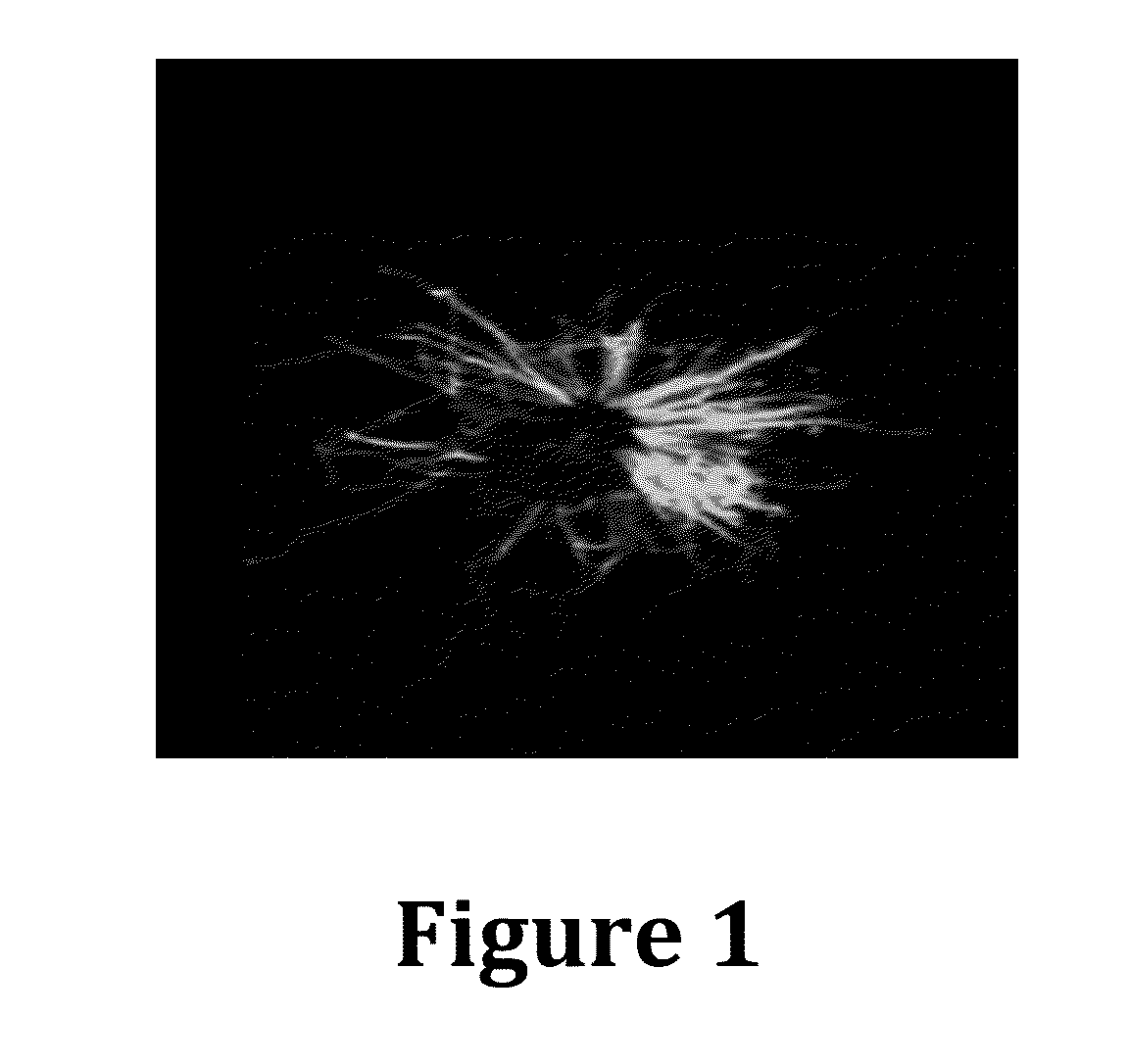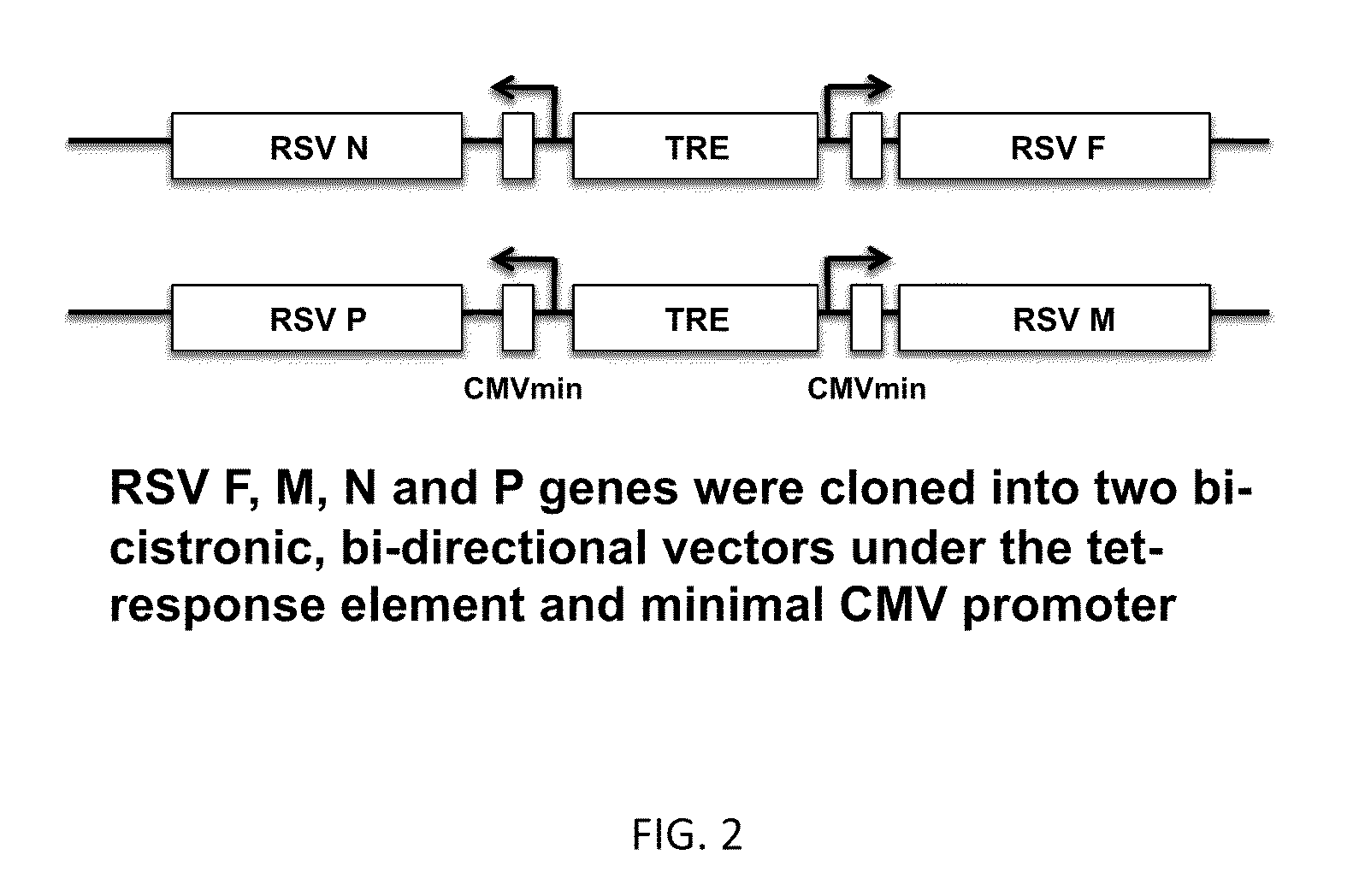Virus-Like paramyxovirus particles and vaccines
a virus and paramyxovirus technology, applied in the field of molecular biology, genetics and virology, can solve the problems of not being able to develop rsv vaccines that are cost-effective in otherwise healthy infants, no fda-approved vaccines, and previous attempts to develop rsv vaccines have faced significant obstacles
- Summary
- Abstract
- Description
- Claims
- Application Information
AI Technical Summary
Benefits of technology
Problems solved by technology
Method used
Image
Examples
example 1
[0152]The inventors sought to develop and test the use of RSV virus-like particles (VLPs) as a novel preventative vaccine candidate. RSV VLPs were produced by transfecting cultured cells with four plasmids encoding cDNAs of the viral proteins F (fusion), M (matrix), N (nucleoprotein), and P (phosphoprotein). Expressed VLPs were then harvested from cell supernatants collected by a membrane flotation isolation procedure. The isolation of VLPs was optimized by analyzing each collected fraction by western blot to detect the presence of each of the four viral proteins. Under optimal expression and isolation conditions, all four viral proteins were detected by western blot analysis suggesting the formation of VLPs. The expression process was performed with different combinations of three of the plasmids to confirm that the four selected proteins constitute the minimal requirement for VLP assembly in vivo. The ability our RSV VLPs to generating an effective immune response was determined i...
PUM
| Property | Measurement | Unit |
|---|---|---|
| diameter | aaaaa | aaaaa |
| diameter | aaaaa | aaaaa |
| diameter | aaaaa | aaaaa |
Abstract
Description
Claims
Application Information
 Login to View More
Login to View More - R&D
- Intellectual Property
- Life Sciences
- Materials
- Tech Scout
- Unparalleled Data Quality
- Higher Quality Content
- 60% Fewer Hallucinations
Browse by: Latest US Patents, China's latest patents, Technical Efficacy Thesaurus, Application Domain, Technology Topic, Popular Technical Reports.
© 2025 PatSnap. All rights reserved.Legal|Privacy policy|Modern Slavery Act Transparency Statement|Sitemap|About US| Contact US: help@patsnap.com



